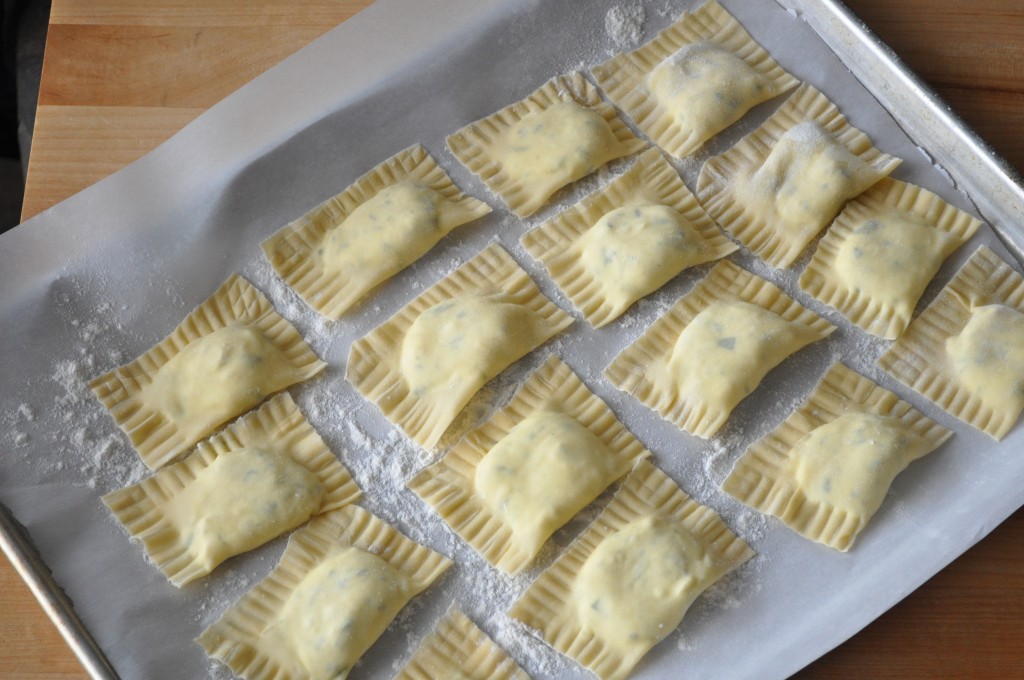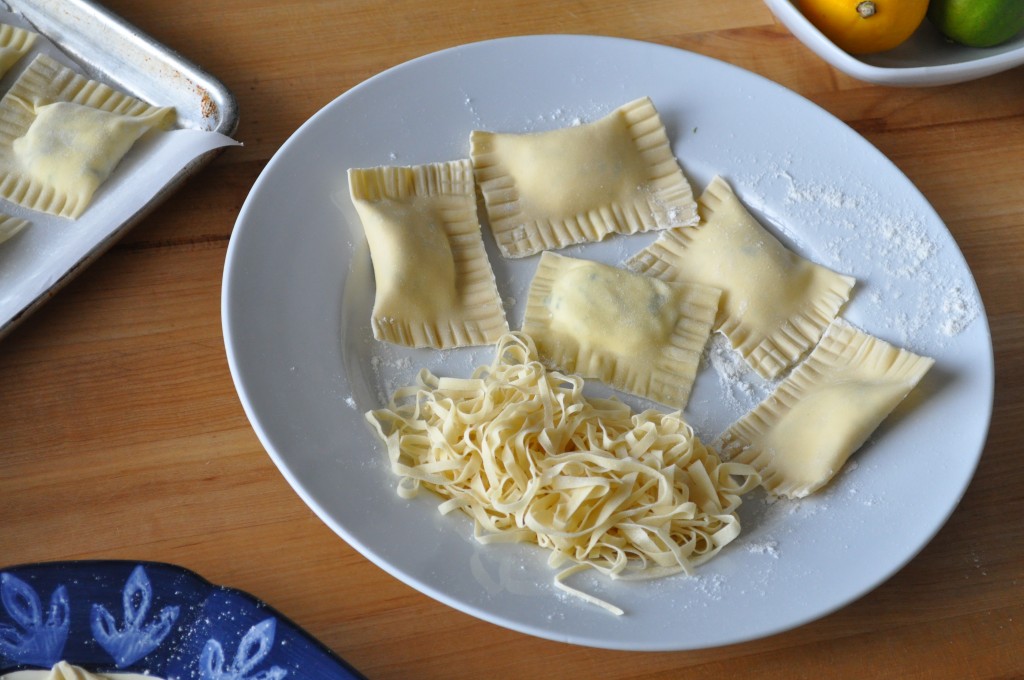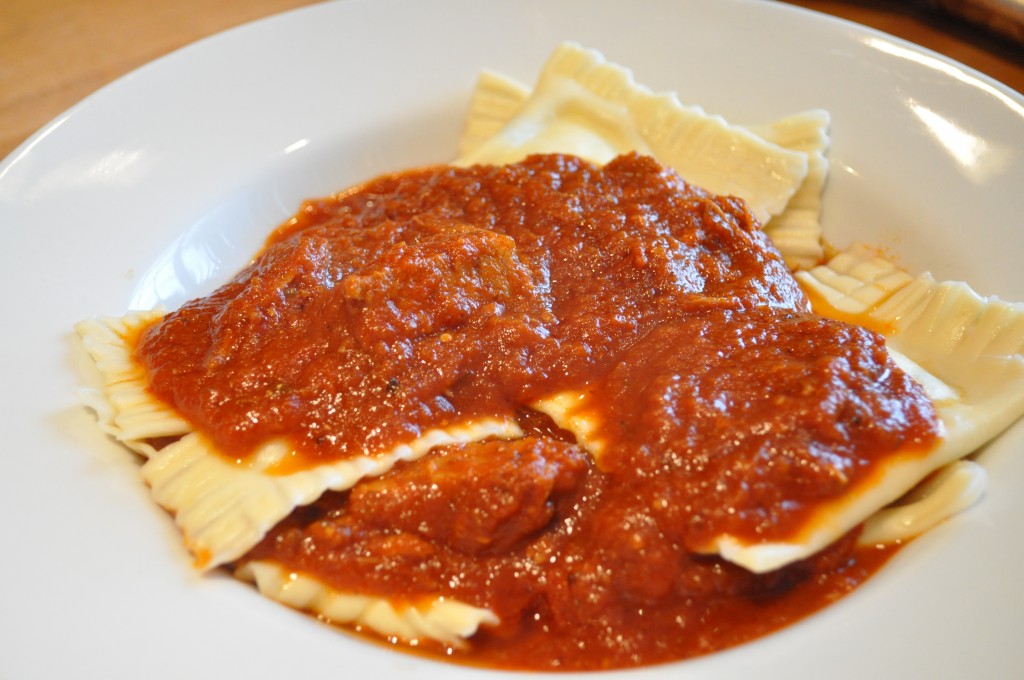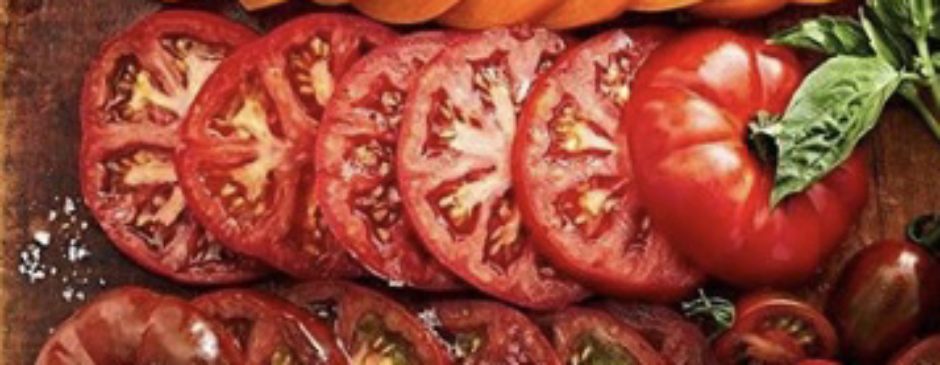


About 5 months ago I stopped eating Gluten: No bread or pasta, nothing with flour, white or whole wheat. No cakes, pies, or cookies. I did this because I know several people who have joined the No Gluten Challenge and wanted to find out if not eating Gluten would make a difference in how I felt. After 5 months of not eating Gluten, I, the biggest spaghetti bender you will ever meet, had to have some pasta. I hadn’t had any problems craving Gluten-laced food but suddenly I couldn’t stand the thought of not eating a dish of pasta. So on Sunday I made homemade ravioli.
Not only was it the thought of sinking my teeth into a pasta dish that made me excited but actually making the dough and the filling was something I could not wait to do.
This was not my first attempt at making pasta as I have been doing it for oh so many years. I started by watching my Mother make pasta on a regular basis. She also made ravioli for special occasions that landed on Sunday. Here comes the reminisce. Whenever Mom made ravioli it was for a special occasion and to feed a crowd. She would start very early on Sunday morning with making the pasta dough. “One egg per cup of flour”, she would bellow as a reminder to us or herself or whomever was present. “How many eggs?”, she would ask. What did we know? She ultimately ended up answering the question herself. “There will be 10 for dinner so I think I’ll do 5 eggs”. (Her thought was always 1 egg per 2 people) Five eggs makes a lot of pasta dough. I mean a LOT! She would make the dough and let it rest covered with a bowl for about an hour before she began rolling it out.
Mind you, Mom did not have a pasta maker, or even a hand cranked machine until very much later in her life. That meant she would make the dough by hand, knead it without the help of a mixer with a dough hook and then roll it out to perfectly even thickness with a rolling pin.
While the dough was resting she would make the rich ricotta filling, once again with the precise measure of 1 egg to 1 pound of ricotta.
After the dough had rested she would begin to roll it out into long sheets about three inches wide by two feet long, put a tablespoon of filling at two inch intervals along the lower third of the pasta sheet, fold over the dough, cut and seal the edges with the tines of a fork. Repeat – roll, fill, cut, seal. This went on for several hours as she would make over 100 ravioli. She would let them dry at room temperature until ready to cook at around 2 in the afternoon. (2pm was always the time for Sunday Dinner.)
Where did she let these little packages of goodness dry, you might ask? Well, on her bed, of course. She would make her bed and then lay a clean white flour sack towels on top and dust the towels with flour. The raviolis would be lined up as if they were little dancers in a chorus line. If there is one thing I learned from her about making ravioli it is always put them on a cloth dusted with flour otherwise they stick to any other surface.
Remember this, while she is making the ravioli, the marinara sauce (gravy) with meatballs, pork, Italian sausage and braciola is being made. And if it were a holiday she should also make a Prime Rib or Turkey along with all the sides that accompany that part of the dinner. But that’s a story for another blog.
The only time my Mother didn’t go to church on Sunday was when she made ravioli. Just think how thankful she was when the Catholic Church started Saturday evening masses. She always felt guilty about not going to church on ravioli day until the church made the big change.
Mom had help on those ravioli days and that help was always my sister, Mom’s sister and myself. She would roll, fill and cut and my sister and I would seal. Her sister, JiJie, would make the gravy and if Grandpa was there he would direct the whole process. A note about Grandpa: He was the best cook of all. When my Mother and her 4 siblings were growing up, Grandpa was the cook as well as the bread winner. Once again the story of my Grandfather is worthy of a special blog. More on him at another time.
Mom’s kitchen was a bustling, well organized and joyous place to be on Ravioli Day. I will cherish the memory forever.
OK, I made the ravioli on Sunday like I said at the beginning of this blog and ate them for dinner. They were as good as my Mother’s ravioli and I was quite pleased with myself. But here is the twist: I did NOT use my mothers recipe for the pasta dough. I have been using my own recipe for quite some time. My Mother’s recipe was 1 egg to 1 cup of all-purpose flour. Several years ago I discovered Double Zero flour from Italy. It is a super fine flour and it has less gluten. I used 3 1/2 cups of Double Zero with 3 whole eggs and 2 egg yolks. This flour produces a much lighter, more tender pasta dough. It is quite resilient as well. I rolled the dough extremely thin and never broke through. And when I cooked them not one ravioli broke in the water. All of you who make your own ravioli know what I am talking about.
I started this blog out by telling you that I hadn’t eaten any Gluten for several months. I am most definitely done with that Tom Foolery.
Here is my recipe for pasta dough and ravioli filling. Enjoy!!!
This recipe is a quick lesson on pasta making. I could write a book about all the different pastas; long and short, filled and unfilled, infused with saffron or spinach or dried tomato, dried and fresh. So many pastas, so little time.

Mom, Lucille, Camille
Home Made Pasta with Double Zero Flour
When I make the pasta dough for ravioli I almost always use half the dough for ravioli and half for pasta noodles. The noodles freeze really well and will last for at least a month in the freezer. I do not recommend cutting the pasta dough recipe in half but you can cut the filling recipe in half without any problem.
Makes Enough Dough For 3 to 4 Dozen Ravioli or Enough Pasta For 6 As A Main Course
3½ Cups Double Zero Flour, Plus More for Rolling Out
3 Large Eggs
2 Large Egg Yolks
½ Teaspoon Fine Sea Salt
A Bowl of Water to Keep Hands Moist
Place the flour directly on a work surface and make a well (hole) in the flour leaving some flour at the bottom of the well.
Lightly beat the eggs with the salt and pour into the middle of the well. With a fork gently incorporate the eggs into the flour by taking a bit of the flour from the inside sides of the well being careful not to break the walls of the well. If this happens the eggs will escape from the well and run all over your work surface. Once the eggs are incorporated enough to not run finish incorporating the flour and eggs with your hands. To help pull the dough together, wet your hands every now and then. The reason for this is to keep out as much excess water as possible. Once it is completely incorporated scrape any hard bits off the work surface, lightly flour it and begin kneading the dough. Constantly turn the dough over itself and, by using the heel of your hand, push the dough away from you. Do this for about 10 minutes to create a soft, pliable dough. The dough should be smooth, not sticky, and not hard. (Kneading dough is a good upper body workout.)
Divide the ball of dough in half and cover with a damp tea towel. Let the dough rest for 1 hour before rolling out.
After an hour, cut each half into halves. While working with a piece of dough keep the others covered with the damp towel. On a lightly floured surface, roll the first piece of dough with a rolling pin to about 1/2 inch thick. This will help the dough go through the rollers of the pasta machine easily and not squeeze out the moisture you want. Set your machine on the highest number and roll the dough through 3 or 4 times folding it over itself each time. Turn the number to the next lowest and roll the dough through 2 times folding the dough over itself each time. Continue lowering the numbers and rolling the dough twice through each number until you reach the thickness you like. I go to number 3 on my machine when making long noodles (2 when making ravioli). Once the dough has gone through all of the settings cut into noodles to the thickness you like by hand. To cut even noodles by hand sprinkle flour on the pasta sheet and roll it loosely lengthwise. Cut the noodles to your desired thickness and gently loosen them into long strands. Place the pasta on a lightly floured towel on a sheet pan into nests. Continue with each piece of dough until all is rolled and cut. Remember to do each piece individually. Rolling all of the pieces first and then cutting them does not work. The dough begins to dry and will not cut without cracking.
When making Ravioli, on the pasta sheet place 1 tablespoon of filling on the lower third of the sheet about 2 inches apart. Fold the top of the dough over the filling and gently press the air out between the each tablespoon of filling. Cut the pasta with a pizza cutter in between each dollop of filling leaving about an inch all the way around 3 sides. Trim to even up the edges and press the dough with a fork to seal.
Place the ravioli on sheet pans lined with a towel and sprinkle with flour. Leave the ravioli uncovered for about 30 minutes and then cover with a tea towel. They can stay like this for a couple of hours or you can refrigerate them until ready to use. If you refrigerate, bring the ravioli back to room temperature before dropping into the boiling water.
When ready to cook, bring a large pot of salted water to a boil and gently place 12 to 16 ravioli into the boiling water. Bring the water back to a boil and cook the ravioli for 3 or 4 minutes. Remove the ravioli from the water with a slotted spoon or skimmer and transfer to a colander to drain well. Once drained, place them on a dish and cover with your favorite sauce. I like to serve them up on individual plates. With this size ravioli, 6 each is a perfect portion. Put a little sauce on the plate them top with ravioli and more sauce.
Hint #1: Folding the dough over itself and rolling over and over makes for a perfectly elastic dough that will not fall apart when you cook it.
Hint #2: If the dough starts to get sticky when rolling it out don’t be afraid to sprinkle a little flour on it. When you fold it over itself while rolling don’t put extra flour on the sides that will meet each other.
Hint #3: When you put the cut pasta on the floured towel in nests let it air dry uncovered. After a bit, gently lift the nests to be sure they are not sticking to each other.
Hint #4: I use the cut scraps for soup. Let the scraps dry at room temperature and then place in a plastic bag and freeze for up to a month.
Ricotta Filling For Ravioli
Makes Enough Filling For 4 Dozen Ravioli
2 Pounds Whole Milk Ricotta, Drained
2 Large Eggs
½ Cup Grated Parmigiano Reggiano
1 Cup Shredded Whole Milk Mozzarella
¼ Cup Chopped Flat Leaf Parsley
¼ Cup Chopped Fresh Basil
1 Teaspoons Fine Sea Salt
¾ Teaspoon Freshly Ground Black Pepper
To drain the ricotta, place it into a doubled piece of cheesecloth and set it into a colander set over a bowl. Place in the refrigerator and drain for several hours or overnight.
In a large bowl thoroughly combine the ricotta, eggs, cheeses, parsley, basil, salt and pepper. Refrigerate until ready to use.
There you have it, my memory of Mom and Ravioli and my recipe for pasta dough.
Buon Appetito!!!
Questions, comments, suggestions and ideas are always welcome. Leave them on the blog or email me at
camille@camillecooksforyou.com
